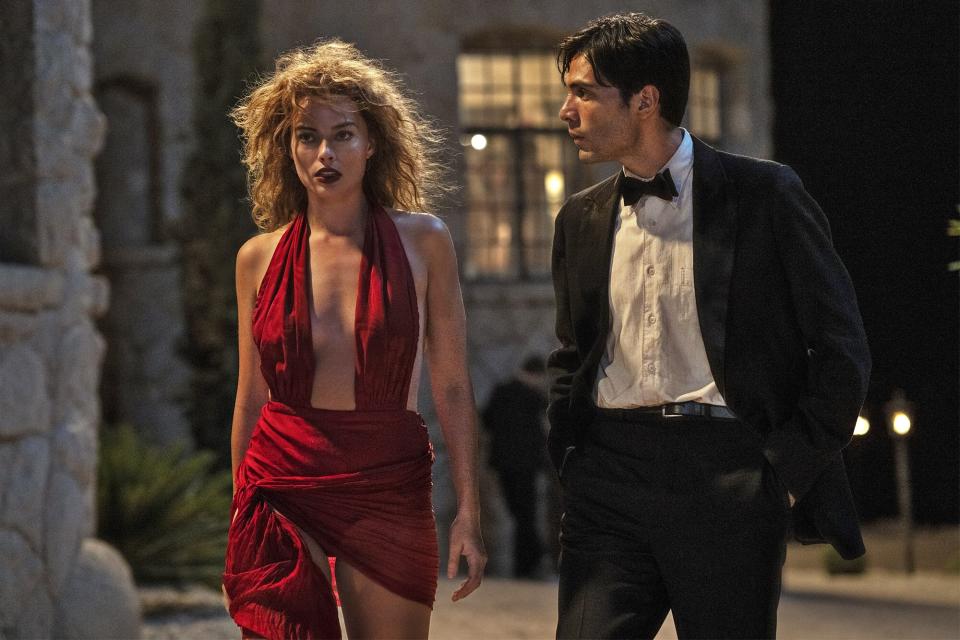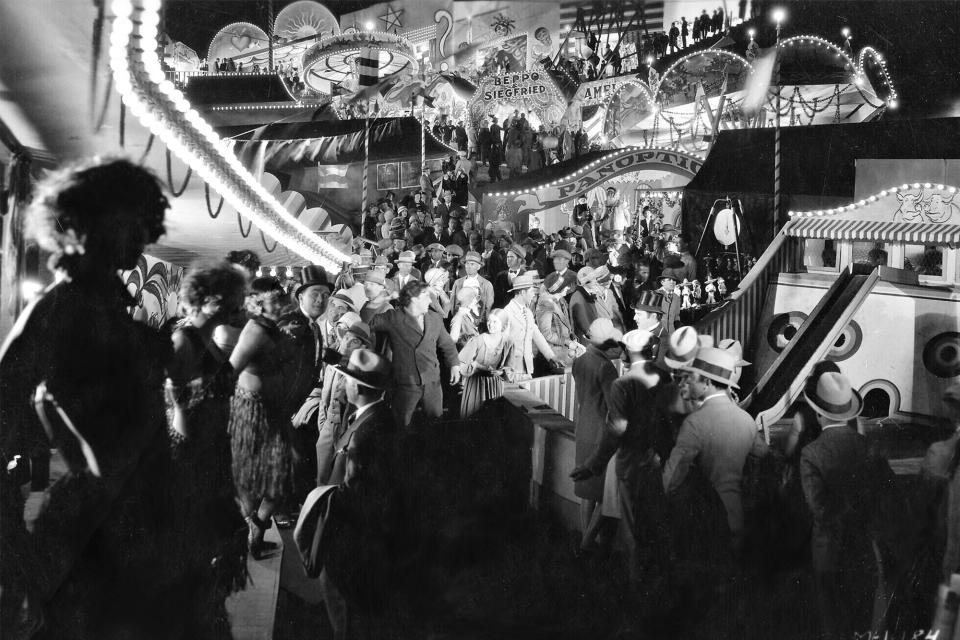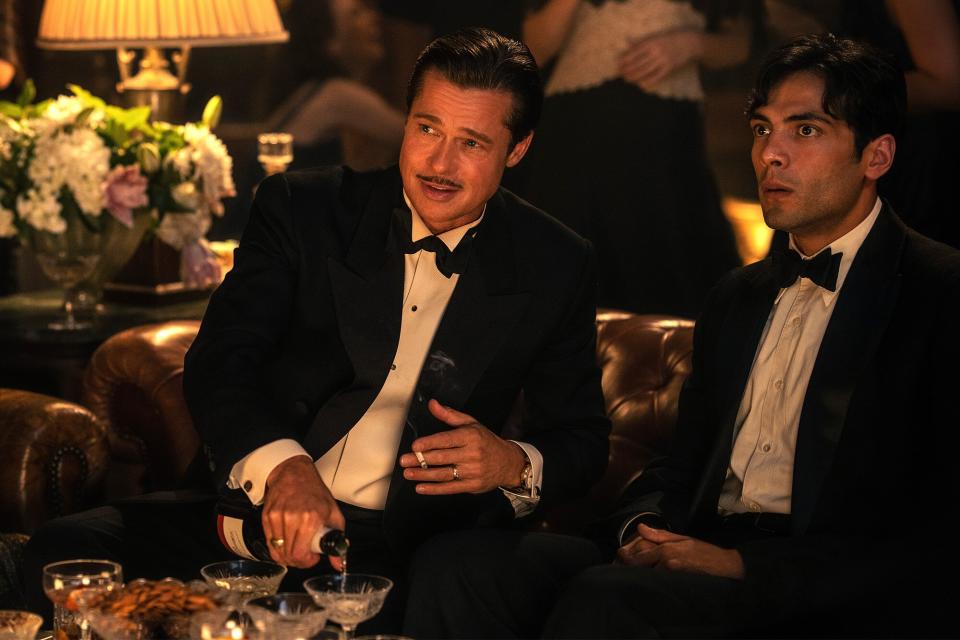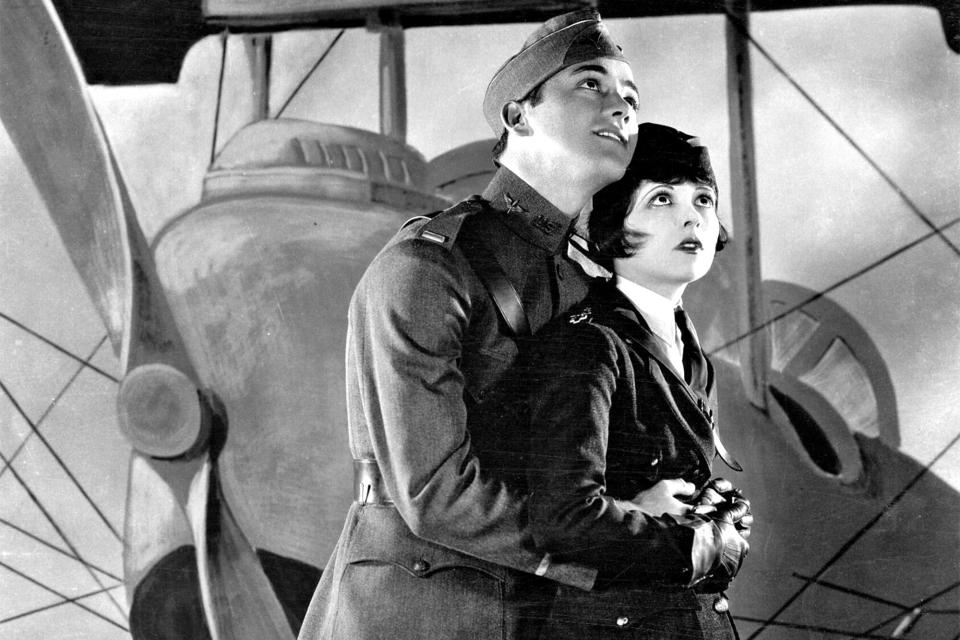Exploring Babylon , Damien Chazelle's star-studded new movie

- Oops!Something went wrong.Please try again later.
- Oops!Something went wrong.Please try again later.
Damien Chazelle is a bit tired. When he calls EW in early October, he's still hard at work putting the finishing touches on Babylon, his sweeping epic (out Dec. 23) about the rise and fall of a menagerie of characters played by Brad Pitt, Margot Robbie, Olivia Wilde, and newcomer Diego Calva. They're all striving to survive amid a great upheaval in 1920s Hollywood as it transitions from silent films to talkies.
The film has been a massive undertaking, which surprised the youngest-ever Best Director Oscar winner (for 2016's La La Land). "The whole process of making it has been longer than I expected," Chazelle, 37, admits. "But at the same time I was pinching myself, because this project has been a dream for so long. So actually getting to make it, as taxing as it might have been, was a pretty blissful experience."
The idea for Babylon first came to the writer-director shortly after he moved to Los Angeles in the late 2000s. Every time he sat down to work on it, though, the project became "more daunting," he says. He chipped away at the story over the years, but it wasn't until he was finishing First Man in 2018 that he felt he had enough research and material to finally write it: "It felt like now or never."
Here, Chazelle reveals what inspired him — and how it all plays out in his eagerly awaited film.

Scott Garfield/Paramount Margot Robbie and Diego Calva in 'Babylon'
Silence, please
Babylon begins in 1926, when movies with synchronized sound are about to radically change Tinseltown — a transition Chazelle imagines felt like "a disaster scenario." For research, he devoured silent films such as Sunrise, Wings, The Docks of New York, and The Passion of Joan of Arc, which he considers the "last great gasp" of their era. "Comparing some of the last silent films to some of the first sound films, you see right away just how brutal the shift was — that suddenly the open-air freedom and expansiveness and experimentation of silent film gets sandwiched and cloistered onto very confined soundstages where you can barely move because they hadn't quite figured out yet how to move the camera easily with sound," he says. "The early talkies are really hemmed in, and it feels like this total, catastrophic loss."
Photographic evidence
To nail down the look of Babylon, Chazelle sought out pictures of Southern California in the 1920s. "You're really struck when you look at photographs of how rural so much of Los Angeles still was, even in 1926. So much of it was literally wide-open," he says. "That dictated a certain visual style — shooting anamorphic, in a way where you really feel the horizontal lines, the vistas, and the topography. I wanted audiences to feel the soil and the dust and the dirt."

20th Century Fox/Everett The 1927 film 'Sunrise'
Optical delusions
Chazelle aimed to capture all the "hubris and vision" of early Hollywood — as well as its "willful make-believe" — in everything from Babylon's sets to the costumes. "There's the weird incongruence of, amidst that [desert town] setting you have these crazy, pitched circus tents, and open-air movie sets sprouting up out of nothing, with vivid colors and crazy costumes," he says. "You're in a California desert, but you turn a corner and you're in medieval Europe, or a snowy village in the Rockies, or the Sahara Desert. You turn a corner and it's complete confection."

Scott Garfield/Paramount Brad Pitt and Diego Calva in 'Babylon'
Classic combinations
As with each of the director's past films (including First Man and Whiplash), Babylon's theme is the personal cost of success. But this time, he says, "what really fascinated me was trying to map that theme over a broad array of people, and a whole society at large, rather than just a single individual or pair of individuals," says Chazelle. Most of the film's characters are fictional, but based in reality. Pitt's Jack Conrad was inspired by John Gilbert, Clark Gable, and Douglas Fairbanks, while Robbie's Nellie LaRoy is a combination of Clara Bow, Joan Crawford, Jeanne Eagels, and Alma Rubens. The goal, Chazelle says, was to "take an honest, unvarnished look at the good and the bad of a really seismic shift" through different characters.

Donaldson Collection/Getty Charles 'Buddy' Rogers and Clara Bow in the 1927 film 'Wings'
Sin city
The film's title is a nod to its ultimate inspiration. Chazelle says he became interested in "stories about societies in transition" throughout history. "It's basically what the early film industry was, this makeshift society that had been built up really fast, in this kind of unbridled, reckless way. [Babylon] was a name used to describe Hollywood in those days — the idea of a sinful place, a city of decadence and depravity that was heading to ruin," he says. "It's like the story of Los Angeles itself."
Babylon arrives in theaters Dec. 23.
Make sure to also check out EW's Holiday Movie Preview cover story on Glass Onion: A Knives Out Mystery.
Related content:

